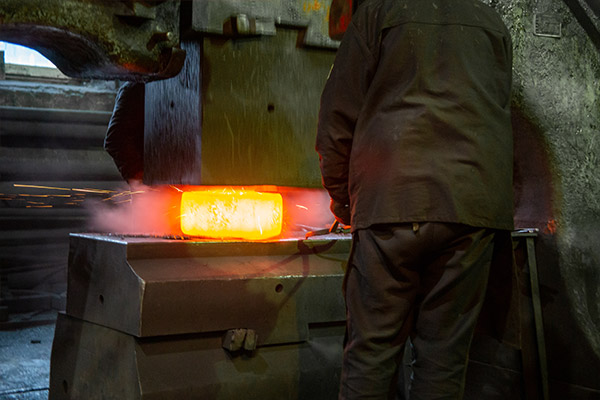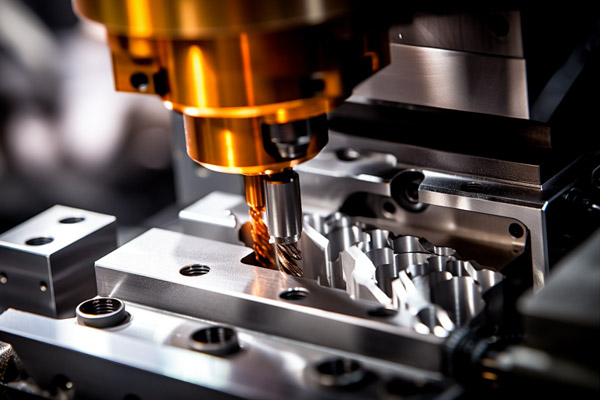Welcome to My Blog! 🌟
Before we dive into the content, I’d love for you to join me on my social media platforms. It’s where I share more insights, engage with our vibrant community, and post regular updates. Here’s how you can stay connected:
📘 Facebook: Connect with me on Facebook
Now, let’s embark on this journey together. I hope you find the content here insightful, engaging, and most importantly, valuable. Let’s explore, learn, and grow together! 🚀
Table of Contents
Introduction

S7 tool steel is a high-performance steel commonly used in tools and equipment that must withstand harsh working conditions. Known for its exceptional toughness, hardness, and wear resistance, S7 tool steel is an essential material in industries like automotive, manufacturing, aerospace, and construction. However, to unlock its full potential, it is crucial to undergo a heat treating process.
Heat treating S7 tool steel involves a series of controlled heating and cooling steps that optimize its physical properties. These treatments improve its strength, resistance to wear, and longevity, making it an ideal choice for high-performance tools. In this post, we’ll dive into six compelling reasons why heat treating S7 tool steel matters and how it can enhance tool performance in demanding applications.
NO 1. Enhances Toughness and Durability
Heat treating S7 tool steel is one of the most effective ways to enhance its toughness and durability. Toughness refers to a material’s ability to absorb energy and deform without breaking, which is critical for tools subjected to high impact and shock loading. Non-heat-treated S7 tool steel can be brittle, leading to fractures or tool failure under stress. However, the heat treatment process refines the steel’s microstructure, allowing it to better withstand shock and heavy loads.
After heat treatment, S7 tool steel exhibits exceptional toughness, even at high hardness levels. This improvement is particularly important in applications where tools are subjected to repeated impacts, such as in forging dies, die-casting molds, and machinery parts. The combination of high toughness and hardness allows these tools to function effectively in extreme conditions, reducing the likelihood of premature wear and failure.
Moreover, heat treating S7 tool steel increases its resistance to chipping and cracking, which can be a concern in tools used in high-impact environments. Tools made from heat-treated S7 steel will maintain their integrity and continue to perform efficiently over time, saving costs on replacements and repairs.
NO 2. Improves Hardness for Long-Term Performance
Hardness is a key property of any tool material, and heat treating S7 tool steel significantly improves its hardness, making it suitable for high-performance applications. Hardness refers to the material’s resistance to deformation, scratches, and wear. Tools made from heat-treated S7 tool steel can withstand the harsh environments typical of manufacturing and heavy industries.
When S7 tool steel is heat treated, it undergoes a process that increases the hardness by altering its microstructure. The steel is heated to a specific temperature and then rapidly cooled or quenched, which leads to the formation of martensite—a crystalline structure that is significantly harder than the original material. Following this process, the steel is tempered to relieve any stresses and to fine-tune the hardness for optimal performance.
Harder materials are more effective at maintaining their sharpness and cutting ability, even after extensive use. For example, cutting tools made from heat-treated S7 steel will retain their edge for a longer period, reducing downtime for sharpening and improving overall productivity. This is particularly advantageous for industries that require precision tools, such as aerospace and automotive manufacturing.
NO 3. Provides Resistance to Wear and Abrasion

One of the most important benefits of heat treating S7 tool steel is its enhanced resistance to wear and abrasion. Wear resistance is the ability of a material to withstand mechanical wear and tear, which is essential for tools that are frequently used for cutting, grinding, or other abrasive tasks. Without proper heat treatment, S7 tool steel can wear down quickly, leading to decreased tool performance and increased maintenance costs.
Heat treating S7 tool steel strengthens its microstructure, enabling it to better resist wear and abrasive forces. This is particularly important in high-impact applications where tools are subject to repetitive contact with hard surfaces or materials. For example, tools used in mining, metalworking, or construction often deal with abrasive materials that can quickly degrade a tool’s performance.
The enhanced wear resistance provided by heat treating extends the lifespan of tools made from S7 tool steel. As a result, companies can reduce tool replacements and maintenance costs, increasing overall efficiency and cost-effectiveness in the long run.
NO 4. Prevents Deformation Under Extreme Conditions
Heat-treated S7 tool steel is also resistant to deformation under extreme heat and pressure. In many industrial applications, tools are subjected to high temperatures and mechanical stress, which can cause materials to warp, bend, or lose their shape. This deformation can lead to tool failure, inaccuracies in the finished product, and potential safety hazards.
S7 tool steel, when heat treated, undergoes a transformation that increases its ability to maintain its shape and structure even under extreme conditions. Heat treatment ensures that the steel retains its hardness and toughness, preventing unwanted changes in shape or size under high stress.
For example, tools used in die-casting, forging, or machining operations may encounter high heat, which can cause untreated steel to soften and deform. Heat-treated S7 tool steel, however, remains stable and retains its original geometry, ensuring precision and reliability throughout the tool’s lifespan. This resistance to deformation is critical for ensuring that tools continue to produce accurate and high-quality results even in challenging working environments.
NO 5. Optimizes Machinability for Ease of Processing
While S7 tool steel is known for its toughness and durability, it is also essential for the material to be machinable, especially for manufacturers who need to shape it into complex tool designs. Heat treating S7 tool steel optimizes its machinability, making it easier to process and form into intricate shapes or precise dimensions.
The heat treatment process involves carefully controlled heating and cooling, which not only enhances the steel’s properties but also makes it easier to machine. This is particularly important for manufacturers who need to create custom tools with specific geometric designs. After heat treatment, S7 tool steel exhibits improved machinability, allowing for smoother cutting and shaping during the manufacturing process.
The ability to machine heat-treated S7 tool steel more easily helps manufacturers achieve higher precision, reduce tool wear, and speed up production. For industries where complex designs are required, such as in automotive or aerospace, this feature is essential for meeting tight tolerances and ensuring the functionality of the final product.
Table: Comparison of Heat Treated and Non-Heat Treated S7 Tool Steel Properties
| Property | Non-Heat Treated S7 Tool Steel | Heat Treated S7 Tool Steel |
|---|---|---|
| Hardness | Medium to low | High |
| Toughness | Moderate | Excellent |
| Wear Resistance | Low | High |
| Deformation Resistance | Low | High |
| Machinability | Moderate | Improved |
NO 6. Cost-Effectiveness in the Long Run

While heat treating S7 tool steel involves additional processing costs, it proves to be highly cost-effective in the long run. Heat-treated S7 tool steel leads to longer tool life, fewer replacements, and reduced maintenance needs, which significantly reduces overall operational costs.
For example, in manufacturing environments where tools are subject to constant wear and tear, investing in heat-treated S7 tool steel ensures that tools maintain their performance for a longer period. This reduces the need for frequent tool replacements and minimizes downtime, allowing businesses to focus on production without interruptions.
Additionally, the improved performance of heat-treated S7 tool steel leads to higher productivity, as tools can maintain their cutting and forming abilities over extended periods. This translates into fewer delays, higher output, and greater profitability for companies that rely on precision tools.
Conclusion
Heat treating S7 tool steel is an essential process for unlocking its full potential. The treatment enhances the material’s toughness, hardness, wear resistance, and machinability, making it a valuable choice for a wide range of high-performance applications. Whether in manufacturing, automotive, aerospace, or construction, heat-treated S7 tool steel provides the reliability and durability required to meet demanding industrial needs.
By understanding the importance of heat treating S7 tool steel, manufacturers can make informed decisions to enhance their tool performance, reduce operational costs, and increase efficiency. For businesses looking to optimize their tool materials, heat treating S7 tool steel is a critical step to ensuring long-term success and superior performance.
FAQ
What is the heat treatment process for S7 tool steel?
The heat treatment process for S7 tool steel typically involves heating it to a high temperature, followed by quenching (rapid cooling) and tempering. This process alters the steel’s microstructure, improving its hardness, toughness, and wear resistance.
How does heat treating S7 tool steel affect its hardness?
Heat treating S7 tool steel increases its hardness by promoting the formation of martensite, a crystalline structure that is harder and more wear-resistant. Tempering then relieves stress and fine-tunes the hardness for optimal performance.
Can heat treating S7 tool steel improve its machinability?
Yes, heat treating S7 tool steel improves its machinability. The process makes the steel easier to shape and cut, which is particularly beneficial when creating complex or precise tool designs.
Why is heat-treated S7 tool steel preferred for heavy-duty applications?
Heat-treated S7 tool steel offers superior toughness, wear resistance, and hardness, making it ideal for tools subjected to high impact, heat, and mechanical stress. This makes it perfect for heavy-duty applications like die-casting, forging, and cutting.
What industries benefit from heat-treated S7 tool steel?
Industries such as automotive, aerospace, manufacturing, and construction all benefit from heat-treated S7 tool steel. Its toughness, hardness, and wear resistance make it an essential material for high-performance tools in these industries.

